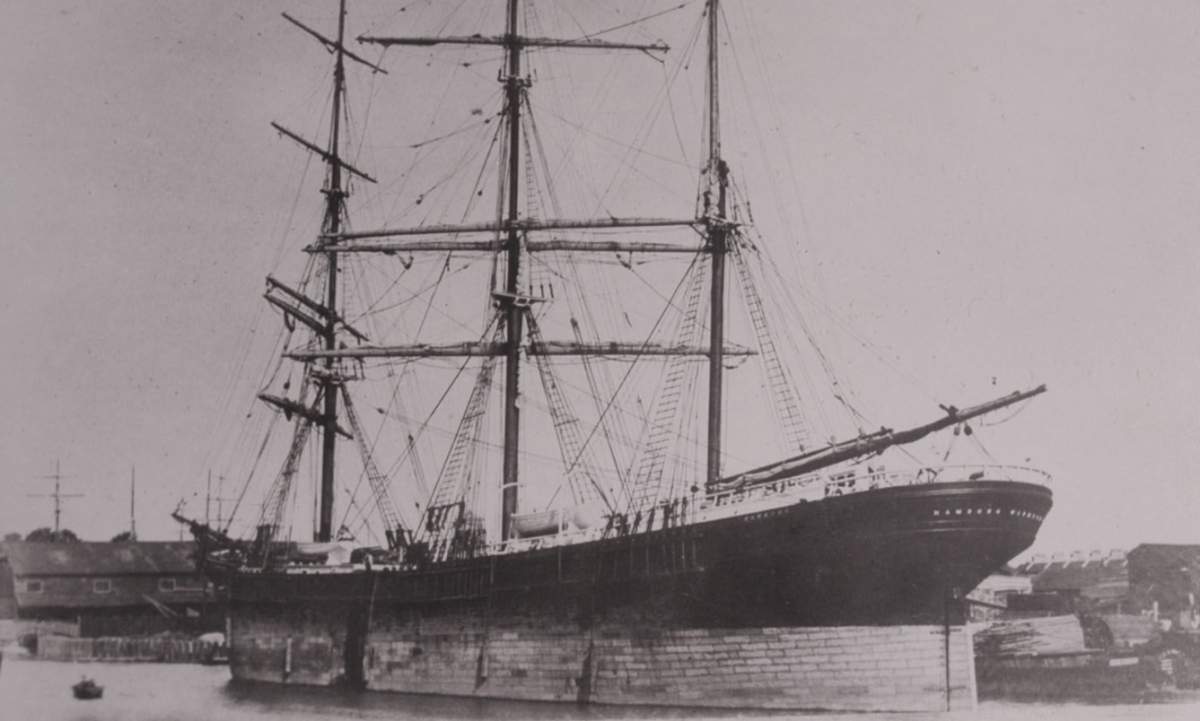It’s not unusual to find bits and pieces of old boats washed up on shore all along the East Coast.

But at one Nova Scotia beach an hour from Halifax, there are three wooden sailing ships — each more than a century old and measuring more than 20 feet high — completely buried in the sand.
They’ve been largely hidden until now.
The ships are in Summerville, N.S. — a small community nestled next to the Avon River. Because it’s connected to the Minas Basin and the Bay of Fundy, extreme tides raise the river by 13 metres over a six-hour period, putting the beach underwater.
Earlier this summer, flash flooding moved enough sand to expose the side of one of the historic ships at low tide.
“Most people thought that was the wharf, but they didn’t know there was three ships buried in the sand,” chuckles area resident Wilfred Ogilvie, 88.
Ogilvie remembers playing between the ships as a child before the vessels were completely covered sometime in the 1970s at what was once a working wharf.

Get daily National news
“They even had a big bunkhouse here because between the (gypsum) quarry and the docks and everything that was here, there was close to 100 men used to work here,” Ogilvie recalls.
He says based on historical images, the boat partially uncovered is the Hamburg, a three-masted wooden vessel with square sails built in nearby Hantsport and launched in 1886.
Back then, wooden pegs were used instead of nails. Dozens of those pegs are now visible in the side of the Hamburg.
“They didn’t use much steel like bolts and things. In those days everything was wood, of course,” Ogilvie explains.
The vessels hauled local gypsum and lumber overseas for decades, but once the steam engine was invented, the “Golden Age of Sail” came to an end.
Eventually, the Hamburg was among three ships abandoned at the wharf, which then burned down in 1936.
“And for years they sat there and probably sunk pretty well every day,” Ogilvie says. “And then the gravel started building in around them, and finding their little holes, and (they) were pretty well buried as we’ve seen here today.”
Wooden pieces of the other two ships are barely visible, poking up out of the beach.
The reappearance of the Hamburg’s hull has reinvigorated interest in the area’s shipbuilding heritage.
While local photographer Irvin Leopold spends a lot of his time documenting the region’s history by interviewing residents, even he didn’t know about the ships at Summerville until he got a call to see the Hamburg.
“I’ve done like 600 videos on history here … and they’re all new to me,” he laughs.
For him, the opportunity to take photos and document Ogilvie’s stories has been fascinating.
“This is a museum setting right here. You can walk back 100 years of time right here,” he says.
Now that Summerville’s secret is out, Leopold hopes people will come see the ship for themselves and learn more about the history it reveals.
“It’s pretty amazing to do that,” he says.
“It’s made quite a sight for a lot of people to see what went on (here) over 100 years ago,” Ogilvie adds.











Comments